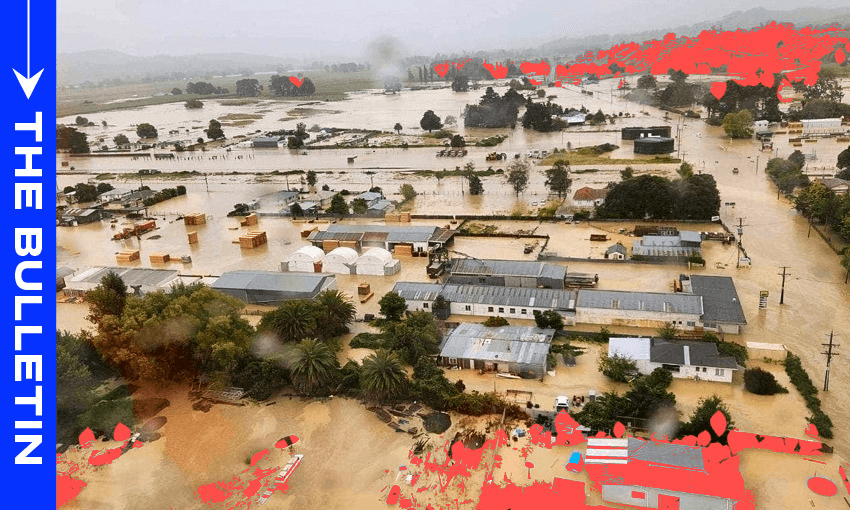A review of the Hawke’s Bay cyclone response finds officials were hampered by communications failures, lack of data and ‘the speed, severity and extent’ of the disaster, writes Catherine McGregor in this excerpt from The Bulletin, The Spinoff’s morning news round-up. To receive The Bulletin in full each weekday, sign up here.
Hawke’s Bay Civil Defence unable to cope, review says
Hawke’s Bay Civil Defence Emergency Management (CDEM) officials were under-prepared for Cyclone Gabrielle, and overwhelmed by its speed and severity when it hit. Those are the topline findings of an independent review of Hawke’s Bay’s CDEM’s response to the cyclone made public on Monday. While officials did many things right, the review found that the region’s control centre “lacked situational awareness and intelligence about much of the danger and damage until too late” and as a result struggled to direct and coordinate first responders, partner agencies and volunteers. The review didn’t just focus on the local response. The national emergency management system “is not currently fit for purpose”, says former police chief Mike Bush, who led the review. “It actually sets up good people to fail.”
Local Civil Defence promises ‘a complete overhaul’
The 117-page review contains 75 recommendations – nine ‘Tier 1’ priority recommendations, and 66 in ‘Tier 2’, RNZ reports. Among the Tier 1 recommendations are that Hawke’s Bay CDEM should develop new regional disaster reduction and readiness plans, and push for central government to revamp the entire civil defence emergency management system. Hawke’s Bay CDEM says it “fully accepts” the review’s findings, and is committed to doing the mahi needed. “To be clear, this is not about incremental change – we see this as a complete overhaul of how we approach emergency management in Hawke’s Bay,” the committee wrote. What they won’t do is sack those in charge last February, a decision that is infuriating some locals. “It’s not satisfactory, you’re there to protect us and you didn’t do that. End of story,” one resident tells Newshub.
Reviews and reports, reports and reviews
If you’re confused by news of another Cyclone Gabrielle review, you’re not alone. At least 10 reports into the disaster have either been published or are underway, including the government’s formal Inquiry into the Response to the North Island Severe Weather Events, led by Sir Jerry Mateparae. That report is due to be delivered to emergency management minister Mark Mitchell today, however it’s not clear when it will be released to the public. Lianne Dalziel, who was elected mayor of Christchurch two years after the 2011 earthquake, writes in Newsroom that the various reviews all have one thing in common: a focus on emergency preparedness and response, rather than more systemic issues such as land use rules and the “business-as-usual activities of councils”, particularly those relating to the management of land drainage systems and infrastructure.
How long would your food supplies last in a natural disaster?
The many system failures and pressure points revealed by Cyclone Gabrielle include those affecting food distribution in a crisis. The Spinoff’s Shanti Mathias looks at how the cyclone has impacted food supplies and highlighted the urgent need for better food security policy.
“Let’s put it this way,” says researcher Jo Fountain. “If all the roads to your town were cut tomorrow, where would you go for food?”
To Fountain, writes Mathias, the question is an urgent one. Living in Lincoln, just outside of Christchurch, Fountain thinks frequently about what might happen if the alpine fault, along the spiny centre of the South Island, has an earthquake – and there is a 75% chance that will happen in the next 50 years. “The whole South Island will be in a state of chaos,” she says. “You can’t expect people to sweep in with food resources.”
